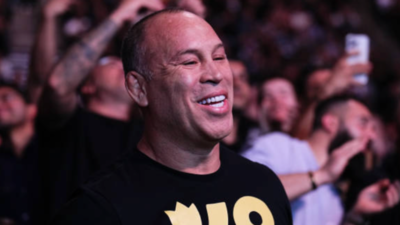ARTICLE AD BOX

Wanderlei Silva (Image Source: Getty)
Controversy surrounded the renowned MMA fighter Wanderlei "The Axe Murderer" Silva in 2014 for allegedly evading random drug testing. The NSAC had, in fact, gone ahead to issue a lifetime ban against Wanderlei, additionally fining him $70,000.
This is how the affair unfolded and how, later, Silva managed to get the ruling amended.
What prompted the lifetime ban for Wanderlei Silva
In May of 2014, Silva was training to face Chael Sonnen at UFC 175. As per NSAC's regulations, there was an attempt to conduct a surprise random drug test at Silva's exercise gym in Las Vegas. Upon their arrival, Silva apparently sneaked through the back exit and escaped the drug sample collection.
During the "information gathering" session, Silva admitted that he was taking diuretics, which are banned by athletic commissions.
He claimed to use them to cut down inflammation and water retention following a wrist injury sustained earlier in the year. Diuretics are not always performance-enhancing directly, but they are banned because they could mask or flush out other drugs.Because he refused to comply with the test (he ran from it), and because he admitted to taking diuretics, the NSAC imposed what was at that time considered the harshest penalty: a lifetime ban against Silva competing in Nevada, along with a fine of $70,000.
The NSAC thus felt they had to take such an action in view of the seriousness of skipping a drug test and avoiding oversight.
Legal challenge and ban reduction
Silva did not go down without a fight. He appealed the decision in January 2015, claiming the NSAC did not have jurisdiction because he had not yet been issued a fighter’s license in Nevada at the time the test was attempted. He argued the punishment was therefore “arbitrary and capricious”. A judge in the Nevada District Court later agreed that the lifetime ban and fine were excessive and beyond what the NSAC was authorised to impose.
He ordered a new hearing.Also Read: No Second Chances: Dana White Issues Lifetime Ban for UFC Fighter’s Post-Fight OutburstAfter the rehearing, in February 2016, the NSAC rescinded the lifetime ban and reduced the penalty to a three-year suspension, retroactive to May 24, 2014, with the result that Silva would again be eligible in 2017. Also, the $70,000 fine was rescinded.
Implications and legacy
There are frequent allusions in MMA regulatory circles to the Silva occurrence as a textbook case. It is a testament to how athletic commissions take seriously the need for compliance with anti-doping rules before a positive test, particularly when the athlete tries to evade or avoid testing.
It also emphasises how due process enters the arena; large-name fighters do challenge bans, especially when jurisdictional questions, fairness, and proportional discipline arise.For Silva, it meant a long time of uncertainty about his MMA career and lost opportunities, especially in Nevada and with the UFC, and an injury to his reputation. After the ruling reversal, he was able to return to competition upon expiry of the suspension under other promotions.



.png)
.png)
.png)
















 1 hour ago
5
1 hour ago
5









 English (US) ·
English (US) ·